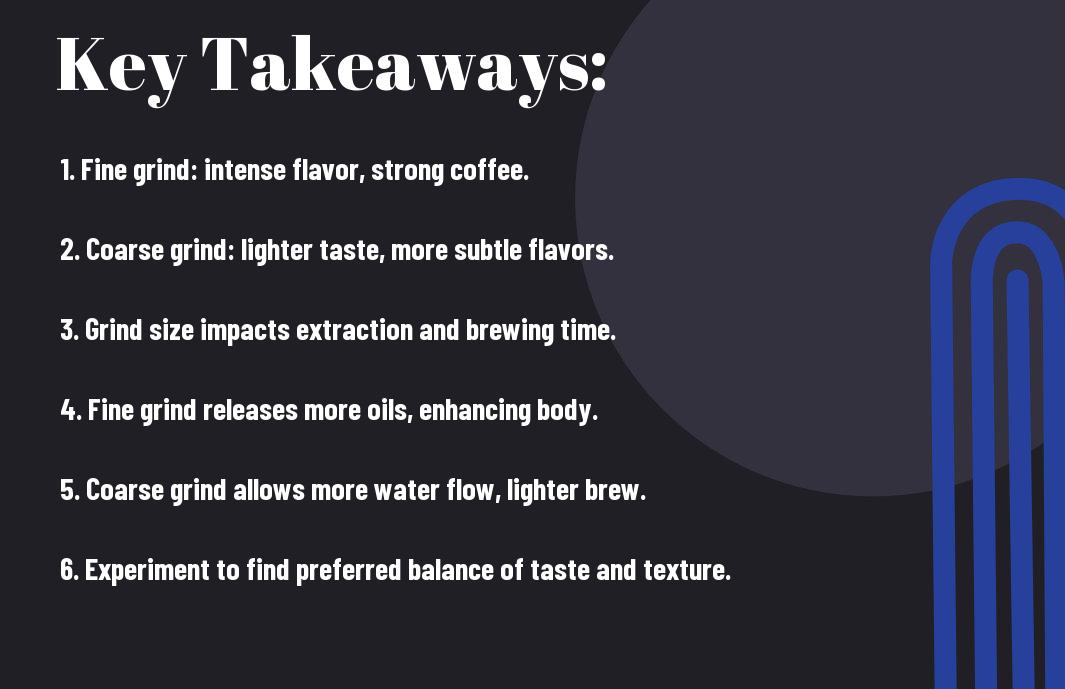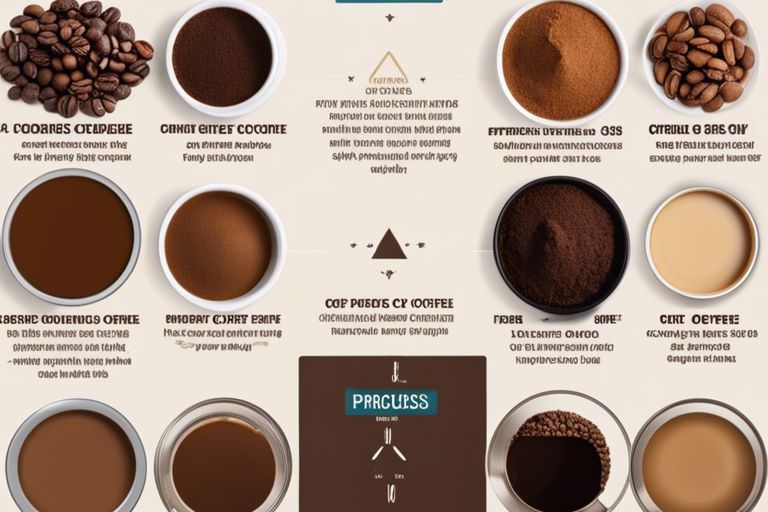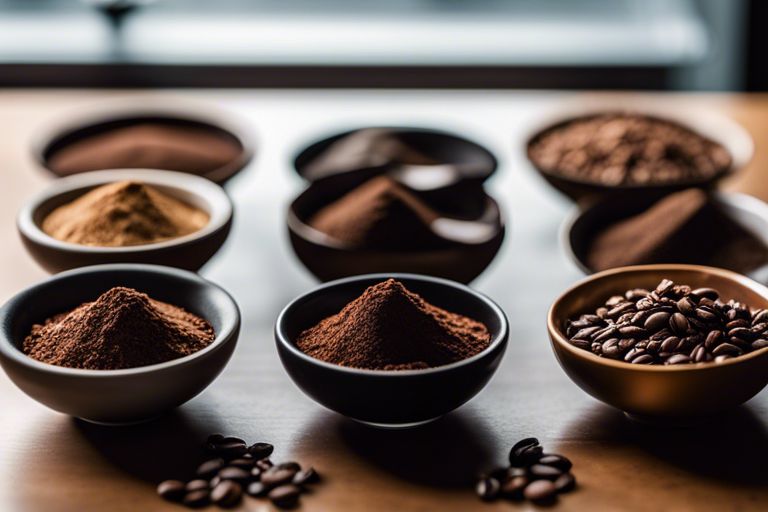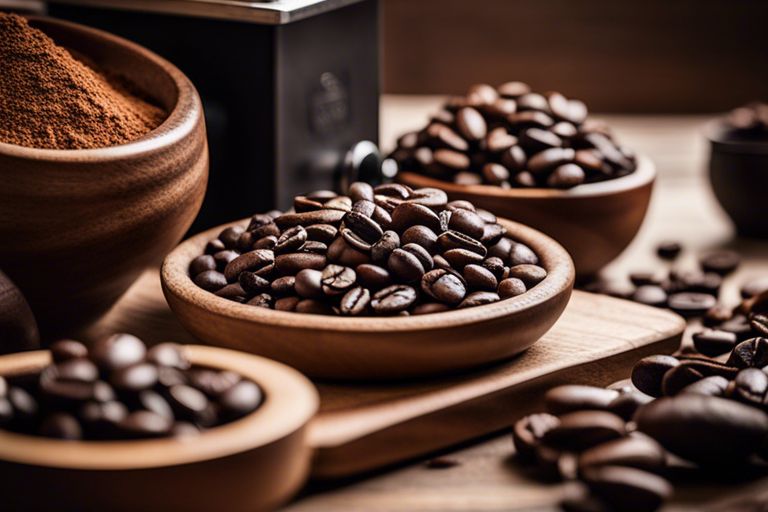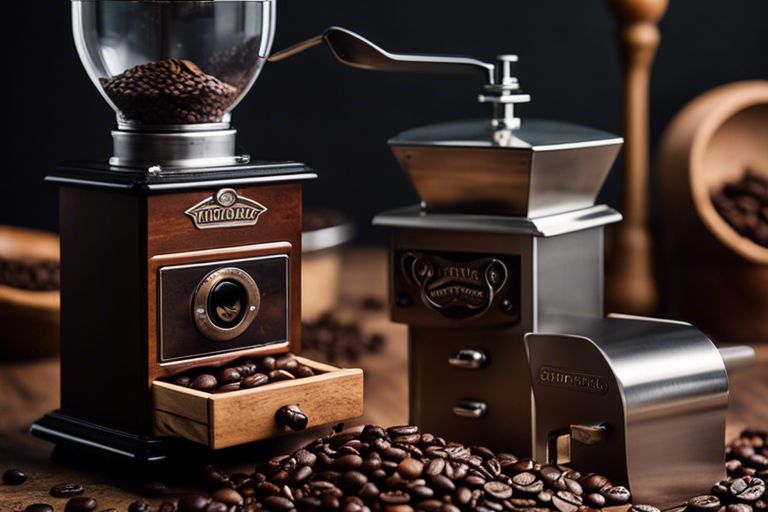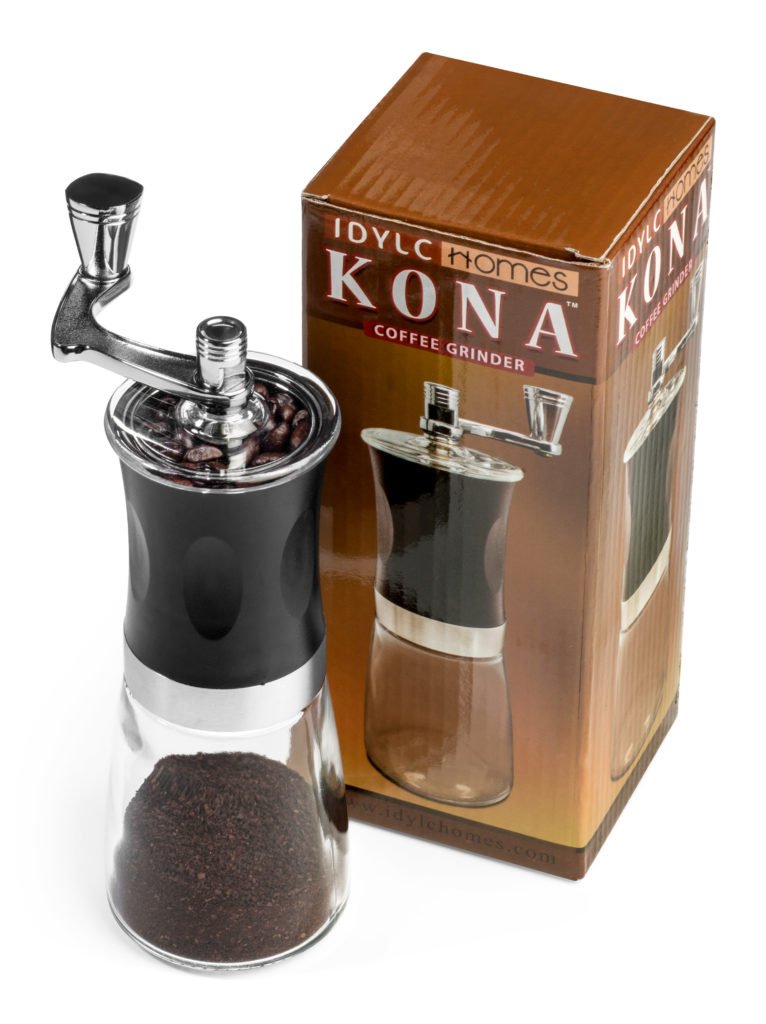You wake up, reach for your favorite bag of coffee beans, and wonder how to turn them into that aromatic brew. Enter the humble yet necessary tool in every coffee lover’s arsenal – the coffee grinder. This ingenious device transforms whole beans into the perfect grounds to extract the flavors we all crave. But how does it work its magic? Let’s probe into the inner workings of a coffee grinder and uncover its secrets.
Key Takeaways:
- Coffee Grinder Function: A coffee grinder is a kitchen tool used to grind coffee beans into a fine powder, allowing for a fresh and flavorful cup of coffee to be made.
- Grinding Mechanism: Coffee grinders typically operate through rotating blades or burrs that crush the beans to the desired grind size, influencing the flavor and strength of the coffee.
- Grind Size Options: Coffee grinders offer various grind size settings, from coarse for French press to fine for espresso, enabling customization based on personal taste preferences and brewing methods.
- Freshness Factor: Grinding coffee beans just before brewing preserves the flavors and aromas that can be lost in pre-ground coffee, ensuring a more satisfying and aromatic coffee experience.
- Cleaning and Maintenance: Regular cleaning and maintenance of the coffee grinder are important to prevent oil buildup and ensure the longevity of the machine, guaranteeing consistent performance and quality coffee grinds.
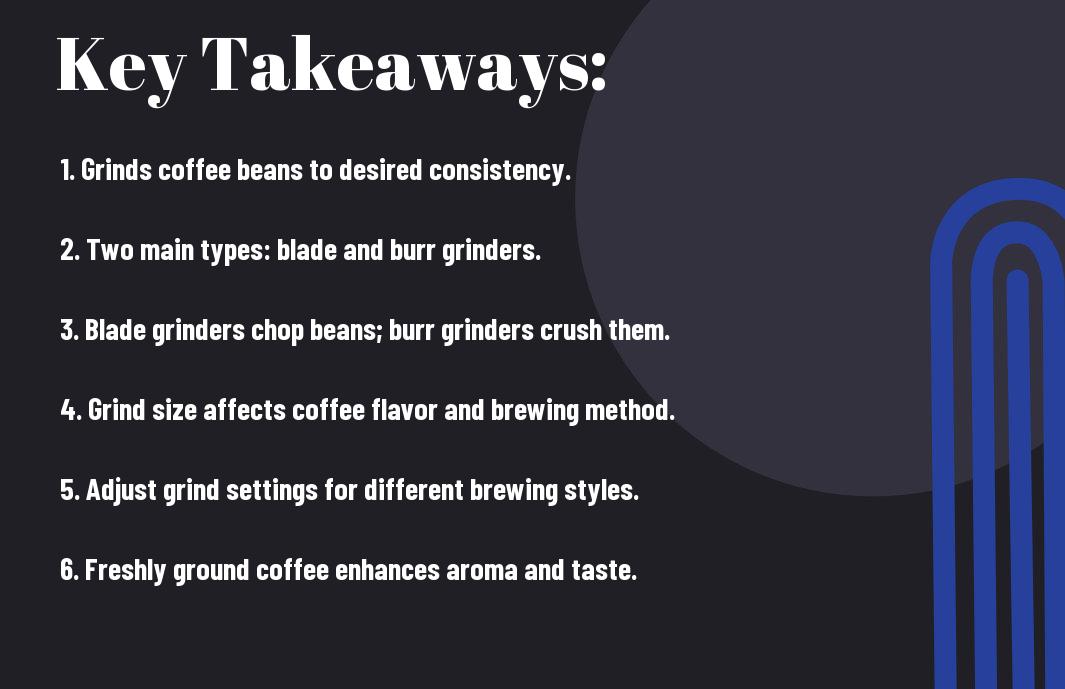
The Basics of Coffee Grinding
Definition of a Coffee Grinder
The coffee grinder is a kitchen tool used to grind coffee beans into a consistent and uniform size. This device is important for making a great cup of coffee as it allows you to control the fineness of the grind, which impacts the flavor and strength of the brew.
Importance of Grinding Coffee Beans
Coffee grinding is a crucial step in the coffee-making process that directly affects the taste and aroma of the final cup. The level of grinding determines how quickly the coffee beans release their flavors during brewing, resulting in either a weak or overly bitter taste if not done correctly.
Coffee enthusiasts understand that different brewing methods require specific grind sizes to extract the best flavors from the beans. For example, espresso needs a fine grind, while French press coffee benefits from a coarser grind to achieve the perfect balance of flavors.
Types of Coffee Grinders
You can find different types of coffee grinders on the market, each with its unique features and benefits. Here is a breakdown of some common types of coffee grinders you might come across:
| Blade Grinders | Burr Grinders |
| Hand Grinders |
Blade Grinders
For those new to coffee grinding, blade grinders are a popular choice due to their affordability and simplicity. These grinders use a spinning blade to chop up the coffee beans, much like a blender. However, the downside to blade grinders is that they can result in uneven particle sizes, which can affect the overall taste of your coffee.
Assume that you are on a budget and looking for a basic grinder to start your coffee brewing journey, a blade grinder might be a suitable option.
Burr Grinders
On the other hand, burr grinders are known for their precision and consistency in grinding coffee beans. These grinders use two abrasive surfaces, called burrs, to crush the beans into uniform sizes. This results in a more even extraction of flavors, making your coffee taste consistently delicious.
Assume that you are serious about your coffee brewing and want to elevate your home barista game, investing in a burr grinder is a great choice.
Grinders
One key feature to consider when choosing a burr grinder is whether it has flat burrs or conical burrs. Flat burrs tend to produce a more uniform grind size, while conical burrs are typically quieter and less messy due to their slower rotation speed.
Hand Grinders
An excellent option for those who appreciate the process of handcrafting their coffee is a hand grinder. These manual grinders require a bit more effort to operate but offer a more hands-on and immersive coffee-making experience. Additionally, hand grinders are portable, making them ideal for camping trips or travel.
Plus, the slow grinding process of hand grinders can help preserve the delicate flavors of the coffee beans, resulting in a more flavorful cup of coffee.
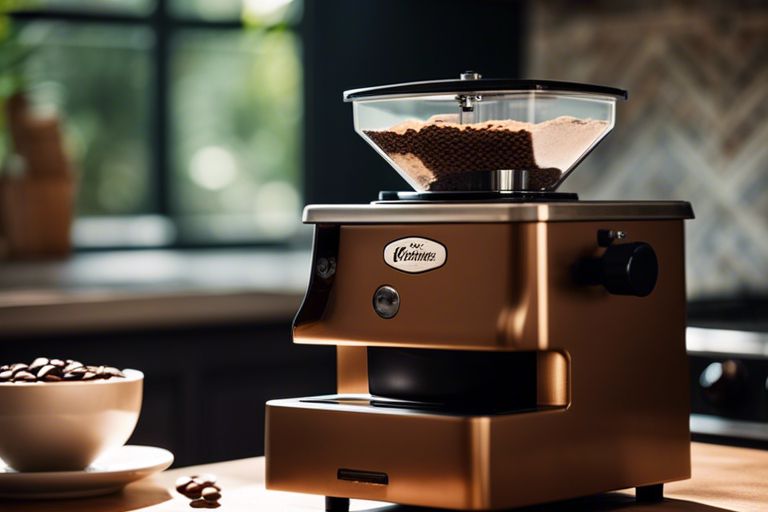
How Coffee Grinders Work
After exploring the intricacies of coffee grinders, you may be wondering how these machines actually work. If you’re curious about the grinding process, you can dive deeper into the mechanics by learning How Does a Burr Grinder Work? (Explained). Understanding this process can enhance your appreciation for the transformation of coffee beans into finely ground particles ready for brewing.
The Grinding Process
With advanced burr grinders, the grinding process involves two burrs – one stationary and the other rotating. As the coffee beans pass between these burrs, they are crushed into consistent particles of the desired size. This ensures uniformity in the grind size, crucial for achieving a balanced and flavorful cup of coffee.
Factors Affecting Grind Quality
Quality grind consistency hinges on various factors, including the distance between the burrs, the burr material, motor speed, and bean feed rate. These elements work together to determine the coarseness or fineness of the coffee grind, influencing the extraction process and ultimately the taste of your coffee. To optimize grind quality, it’s important to consider these factors and adjust them accordingly.
- Choosing the right grind size is crucial for achieving the desired flavor profile.
- Thou should also pay attention to the freshness of the beans and the cleanliness of the grinder for optimal results.
Quality grind consistency not only affects the flavor of your coffee but also impacts the brewing process. The size and uniformity of the grind can alter the extraction rate, affecting the strength and body of the final brew. By focusing on factors that influence grind quality, you can fine-tune your coffee brewing experience and savor the nuances of each cup.
Grinding
Grinding coffee is a delicate art that requires precision and attention to detail. The process of breaking down coffee beans into uniform particles is important for extracting the full flavor potential of the beans. Different brewing methods call for specific grind sizes, from coarse for French press to fine for espresso, highlighting the importance of a consistent and adjustable grinder.
Key Components of a Coffee Grinder
Many coffee grinders come equipped with either blades or burrs to grind your coffee beans to the desired consistency.
Blades vs. Burrs
With blade grinders, the beans are chopped up using a spinning blade, much like a blender. This method can result in an inconsistent grind size, which may affect the flavor of your coffee. On the other hand, burr grinders crush the beans between a moving grinding wheel and a non-moving surface, resulting in a more uniform grind that is ideal for brewing a delicious cup of coffee.
Motor Power and Speed
One crucial factor to consider when choosing a coffee grinder is the motor power and speed. A higher power motor will provide more torque to grind the beans effectively, while a grinder with variable speed settings allows you to customize the grind based on your preferences. It is necessary to find a balance between power and speed to achieve the perfect grind for your brewing method.
It is crucial to consider the durability and efficiency of the motor when selecting a coffee grinder. Components such as the motor’s construction and cooling systems can impact the grinder’s performance and longevity, ensuring that it can handle frequent use without overheating or wearing out prematurely.
Hopper Capacity and Design
It is important to pay attention to the hopper capacity and design of a coffee grinder, as these factors can affect the convenience and functionality of the machine. Components such as the hopper size, material, and shape can impact how many beans you can grind at once and how easy it is to refill and clean the grinder.
Components such as the hopper lid and feed chute design can also contribute to the overall user experience, making it easier to add beans and prevent spills or mess while grinding. Consider these factors when choosing a coffee grinder to ensure that it meets your needs and preferences.
Benefits of Freshly Ground Coffee
Flavor and Aroma Enhancement
To truly appreciate the rich and nuanced flavors of coffee, grinding your beans fresh is important. Not only does freshly ground coffee offer a more aromatic and flavorful experience, but it also allows you to customize the grind size to suit your preferred brewing method.
Texture and Mouthfeel Improvement
One of the underrated benefits of freshly ground coffee is the texture and mouthfeel it provides. When coffee beans are ground just before brewing, the resulting coffee tends to have a smoother and more velvety mouthfeel. This enhanced texture can elevate your coffee drinking experience to a whole new level.
The grind size of your coffee beans can significantly impact the overall mouthfeel of the brewed coffee. For example, a finer grind tends to produce a fuller body and creamier texture, while a coarser grind may result in a lighter mouthfeel.
Increased Caffeine Control
The ability to control the caffeine content in your coffee is another advantage of using a coffee grinder. By adjusting the grind size and the coffee-to-water ratio, you can customize the strength of your coffee to suit your preference. This level of control allows you to enjoy your coffee without worrying about it being too strong or too weak.
Mouthfeel is also influenced by the caffeine content in coffee. Higher caffeine levels can contribute to a bolder and more robust mouthfeel, while lower caffeine levels may result in a smoother and milder experience.
Increased Sustainability
When you grind your coffee beans fresh at home, you are contributing to a more sustainable coffee consumption practice. By purchasing whole beans in bulk and grinding them as needed, you reduce the amount of packaging waste associated with pre-ground coffee. This small change in your coffee routine can have a positive impact on the environment in the long run.
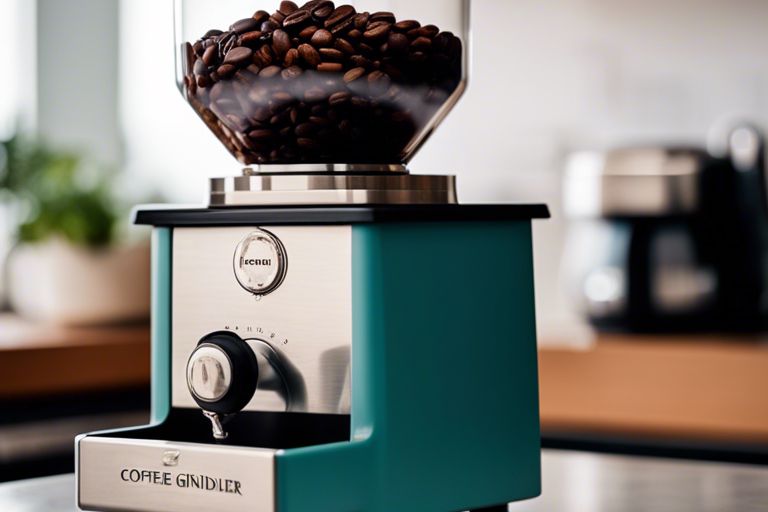
Choosing the Right Coffee Grinder
Once again, selecting the right coffee grinder involves considering various factors to ensure you find the perfect match for your coffee brewing needs. From your coffee habits to budget and space constraints, as well as additional features and accessories, each aspect plays a crucial role in determining the most suitable grinder for you.
Considering Your Coffee Habits
Coffee enthusiasts with varying coffee consumption habits should take into account how frequently they brew coffee and the brewing methods they prefer. If you indulge in multiple brewing techniques like espresso, French press, or pour-over, a versatile grinder with adjustable settings to achieve different grind sizes is necessary.
Budget and Space Constraints
Choosing a coffee grinder that aligns with your budget and space availability is vital. While electric burr grinders offer precision and convenience, manual hand grinders are budget-friendly and compact, making them ideal for those with limited counter space or on-the-go coffee lovers.
Considering your budget constraints, opt for a grinder that meets your financial expectations while still providing consistent grind quality to elevate your coffee experience.
Additional Features and Accessories
Space-saving features like detachable hoppers for easy storage, built-in scales for accurate measurements, and portafilter holders for direct grinding into your espresso machine’s portafilter can enhance your grinding experience and streamline your coffee preparation process.
To further elevate your coffee ritual, explore grinders with advanced features such as programmable settings, digital displays, and presets tailored to your favorite brewing methods to enjoy a customized coffee experience every time you brew.
Final Words
Upon reflecting on the intricacies of a coffee grinder and its role in the coffee-making process, we can appreciate the precision and care that goes into extracting the perfect grind for a flavorful cup of coffee. Understanding the various types of grinders and their mechanisms can enhance our appreciation for the art and science of coffee brewing. Whether it’s a manual grinder with burrs or an electric grinder with blades, the goal remains the same – to achieve the desired consistency for a satisfying brew.
FAQ
Q: What is a coffee grinder?
A: A coffee grinder is a kitchen tool used to grind whole coffee beans into a fine powder or coarser grind, depending on the brewing method.
Q: How does a coffee grinder work?
A: A coffee grinder works by using blades or burrs to chop or crush the coffee beans into smaller particles, allowing the flavors and aromas to be extracted during the brewing process.
Q: What are the different types of coffee grinders?
A: There are two main types of coffee grinders: blade grinders and burr grinders. Blade grinders use a spinning blade to chop the beans, while burr grinders crush the beans between two abrasive surfaces.
Q: Why is it important to grind coffee beans freshly?
A: Grinding coffee beans freshly before brewing helps preserve the flavors and aromas of the coffee. Once coffee beans are ground, they start to lose their freshness and the important oils that contribute to a flavorful cup of coffee.
Q: How can I choose the right coffee grinder for me?
A: When choosing a coffee grinder, consider factors such as the grind size options, consistency of grind, and your preferred brewing method. Burr grinders are generally preferred for their consistent grind size, while blade grinders are more budget-friendly.
What are the origins of coffee


